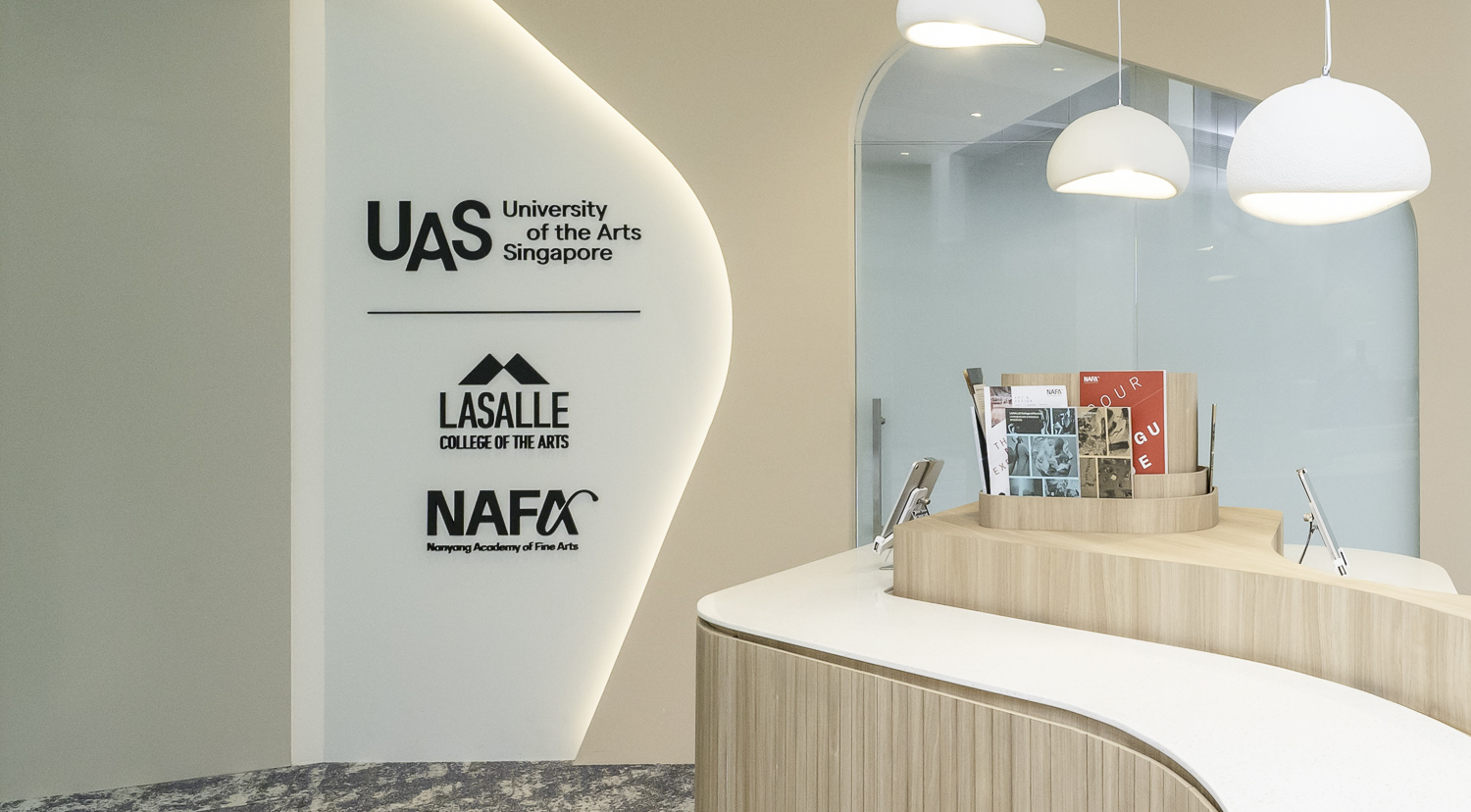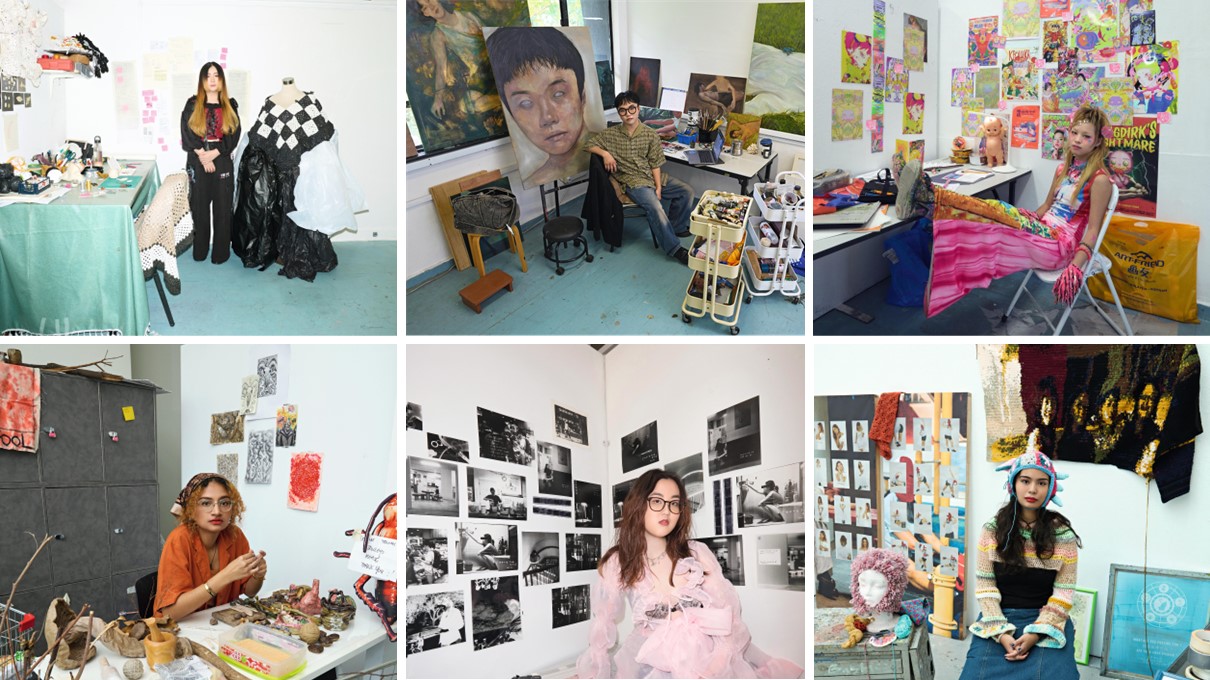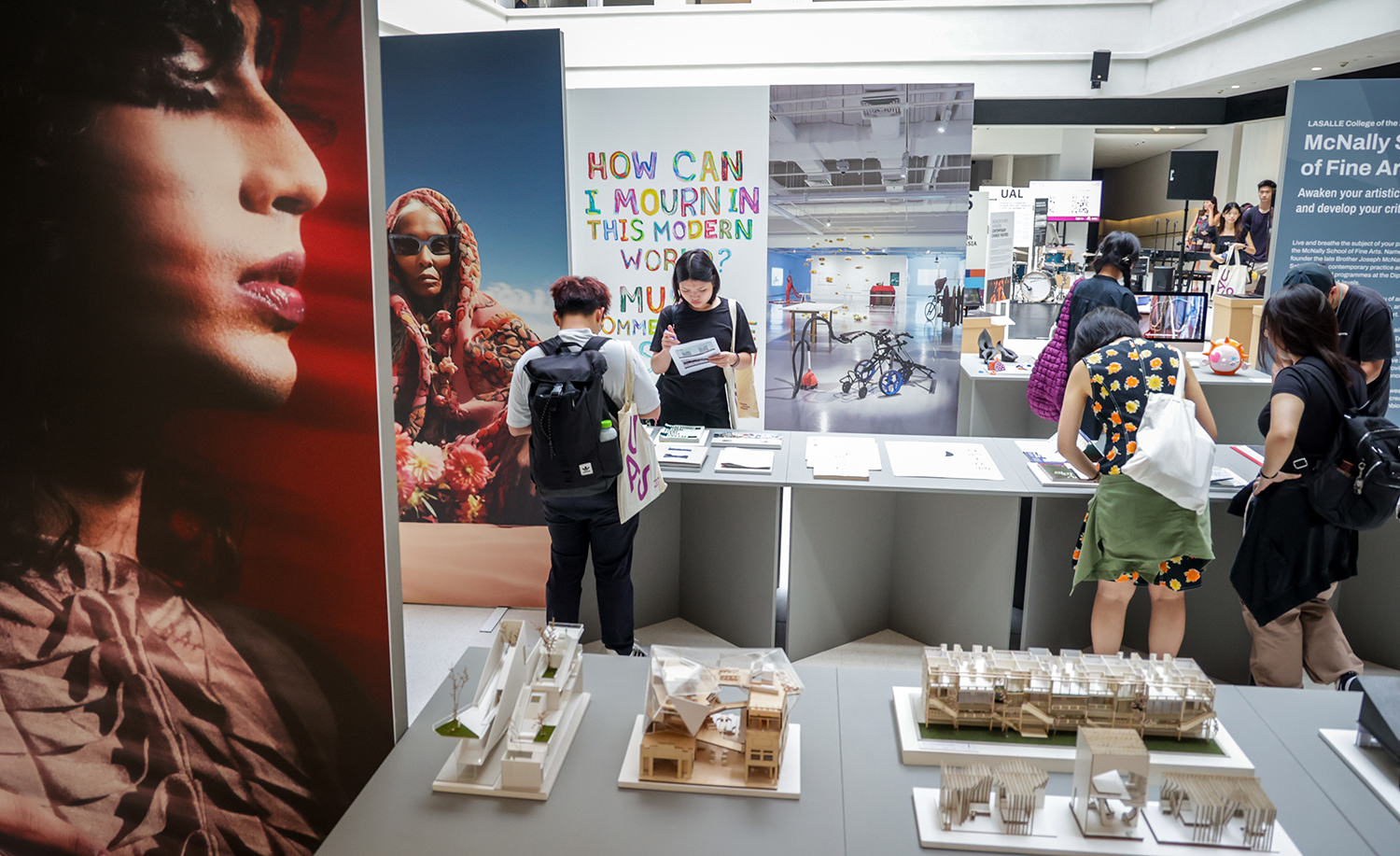By Arthur Sim, Correspondent
SINGAPORE – Mr Jose Isidro Camacho is the chairman of the Board of Trustees of the new University of the Arts Singapore (UAS), and few will deny that he is just the man for the job.
After all, three of his six children are fine arts graduates and he knows, first-hand, what arts-inclined kids and their parents go through.
The Filipino national and Singapore permanent resident, who has lived here for more than 20 years, says: “I know about the travails of artists and their education, so I think I have an appreciation as a parent on the needs that can be provided by an arts institution like UAS.”
UAS will welcome its first intake of students in 2024. Currently, it anticipates a cohort size of around 700 students.
The university will collaborate with Lasalle College of the Arts (Lasalle) and Nanyang Academy of Fine Arts (Nafa) to offer both undergraduate and postgraduate programmes, with degrees awarded by UAS.
Currently, Lasalle and Nafa offer degree programmes with Goldsmiths, University of London, University of the Arts London and the Royal College of Music, all in the United Kingdom.
“Instead of granting UK degrees, we will be granting Singapore degrees. It’s about time,” adds the former secretary of finance in the Philippines, who used to work in banking.
Mr Camacho reckons it has taken this long because a fine arts degree – be it in disciplines like visual arts, music, dance or theatre – is not highly coveted for practical reasons here.
“The arts are not the easiest thing to be successful in, at least financially. You can be very successful, but have to live a simple life,” concedes the 68-year-old.
He recalls the time when his son Lorenzo, 38, decided to be a full-time artist after graduating with a Masters of Fine Arts from the Hochschule fur Bildende Kunste (Dresden University of Fine Arts) in Hamburg, Germany, in 2014.
“He came to my wife and me and told us he is happy to be poor.”
Lorenzo also graduated with a fine arts degree from Harvard University in the United States in 2007. He worked as a teaching assistant at Harvard for a while and is now based in Berlin, Germany.
His father describes him as a “biennale artist”. Together with American artist Amy Lien, whom Lorenzo has worked with since 2009, he focuses on conceptual artworks for international art biennales, museums and art institutions. The two get by with artist residencies and fellowships at universities.
Mr Camacho says: “He is our son and we would support him, but he doesn’t want it. He lives independently and has managed to do so.”
His eldest child, Bea, 40, also studied fine arts at Harvard and later, architecture at the university’s Graduate School of Design, graduating in 2005 and 2013 respectively.
As a conceptual artist, she has performed at major art institutions including the Tate Modern in London. But she also has a corporate career and is a director at global design company Ideo.
“She combines the left brain and right brain,” adds Mr Camacho, whose youngest child is 27.
What Bea has achieved in her career is what he hopes for graduates of UAS.
“I hope UAS will generate creative, artistic graduates who are also part of building the creative economy. That is where the world is headed – a convergence of arts and culture with business, health, education. It’s already happening. Think of the intersection between art and health. Art therapy is a growing industry.”
He also believes more graduates will go into fields of digital technology. “Those are the cross-disciplines that will emerge over time,” he says.
To prepare its students, UAS will offer new programmes with new focuses, he says.
“We have to develop new skills for our graduates and the economy. And art can develop new disciplines for young people,” he adds.
To start, UAS will offer 27 undergraduate and postgraduate degree programmes.
Some of these are being offered for the first time in Singapore and South-east Asia, including bachelor’s degrees in areas such as Art Histories and Curatorial Practices: Asia and the World, Biophilic Design, and Contemporary Chinese Theatres.
Other programmes include master’s degrees in art therapy and performance.
Mr Camacho believes that full-time artists, writers, dancers and musicians contribute to society in many ways.
“Sometimes, it’s about expressing new ideas,” he says.
Referring to the challenges the world is facing, like climate change and geopolitics, he adds: “These are challenges where I think the arts world can contribute.”
As an example, he cites Singapore artist Tang Da Wu, who founded the influential arts group, The Artists Village, in 1988.
“When you think of Tang, certainly he has intersected with nature and the earth in many of his art practices.”
As an art lover and collector, and patron of the arts, Mr Camacho has served on the boards of the National Heritage Board, National Gallery Singapore and NTU Centre for Contemporary Art Singapore.
He sits on the board of STPI Creative Workshop & Gallery, so he is familiar with the art scene in Singapore. STPI is a not-for-profit organisation that promotes artistic experimentation in print and paper.
Local artists he admires include Charles Lim and Amanda Heng, who have had solo exhibitions at STPI. Lim’s media include film, installation, sound, text, drawings and photographs, while Heng is a multidisciplinary artist well known for exploring feminist issues.
“You can tell that the works they are doing are breaking the barriers of convention and tradition, and they are looking to experiment. I think that’s very healthy and how the arts should evolve,” Mr Camacho says.
“To me, artists are like futurists. They are good predictors of the future because they imagine things that we ordinary people cannot imagine. A true artist is a visionary. They are so far ahead of the average person in creating a view of the future.”
His wife Kim – who is also from the Philippines, and whom he met when they were both studying at Harvard Business School in the 1970s – shares his passion for art.
Together, they have amassed one of the world’s largest and most comprehensive collections of works by renowned Japanese artist Yayoi Kusama.
Kusama is best known for her works featuring pumpkins. At a Sotheby’s auction earlier in 2023 in Hong Kong, one of her pumpkin sculptures (measuring 241cm by 235cm by 235cm) sold for close to $11 million.
Eight works from the Camachos’ collection are on loan to and being exhibited at Spain’s Guggenheim Bilbao museum.
“We are very open. It’s our way of sharing,” says Mr Camacho.
The collection is on display in their Manila home.
“From the outside, the house looks like a big box,” adds Mr Camacho, who collaborated with his architect to design the house, and who himself once aspired to be an architect.
However, he pursued a different career path because he did not come from a rich family.
“I love architecture and I love designing. But a livelihood was very important to me. I had material ambitions and I wanted to be financially successful,” says Mr Camacho, who completed his undergraduate studies at the De La Salle University in the Philippines in the early 1970s.
He initially read engineering before switching to mathematics so that he could “finish school in three years instead of four”.
His first job after graduating was at an insurance company.
“Six months later, my boss (at the insurance company) moved to a bank and took me along,” he says, adding that he has been in banking since 1976.
“I never had the chance to consider another profession like architecture, but I am happy now, and very fulfilled. I have achieved what every finance person has wanted to be,” adds Mr Camacho, who was the Philippines’ finance minister from 2001 to 2003.
While being financially successful was a deciding factor in his early career, he says prospects for art school graduates are very different now.
“When I finished university, there were no jobs for digital programmers who would create video games – where I might have combined my artistic inclinations with my background in engineering,” he says.
To create even more opportunities for its graduates, UAS will build partnerships with institutions and the business community.
Without going into details, he says: “We have to provide our graduates with opportunities to carve their own paths in their chosen profession. Some may not end up as traditional artists.”
UAS will be temporarily located at National Design Centre in Middle Road. While students will attend classes and use the facilities at the Lasalle and Nafa campuses nearby, the common curriculum sessions and shared services will be housed at National Design Centre.
DesignSingapore Council will continue to be based there, while UAS will be the key tenant.
“With the two constituent colleges working together with UAS as the umbrella, we will continue to grow, and growth will require space. And with the incremental space requirements of both Lasalle and Nafa, we might try to consolidate that into one structure. But it is too early to be talking specifics,” Mr Camacho says.
Meanwhile, the university will also position itself as a regional arts institution.
“This will help the arts ecosystem of Singapore,” he says.
Though it will take time, he says he thinks of it “as a journey that is half travelled” and that they “are not starting from scratch”.
With Mr Camacho at the helm, UAS appears to have found its champion.
“I have been in management roles and, at the same time, I have a passion for arts. I would consider myself an arts warrior,” he says.
For parents who may still be apprehensive about sending their children to an arts university, Mr Camacho has this advice: “Allow kids to work on their passion, what they are most interested in. Artists don’t have to be pure artists. My son (Lorenzo) is a pure artist by choice. My daughter (Bea) is able to balance her creativity with her professional job as a designer.”
He adds: “Whatever my children decided to do, they decided on their own.”
To potential students of UAS, he says: “Look for a discipline where you can be excellent and have a very strong interest. The passion and the skills you have are what will allow you to be successful in whatever profession you decide on.”
View PDF copy of the article.
Online on The Straits Times:
University of the Arts Singapore’s Jose Isidro Camacho: I’m an arts warrior | The Straits Times












